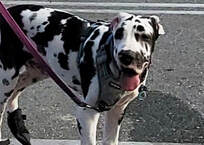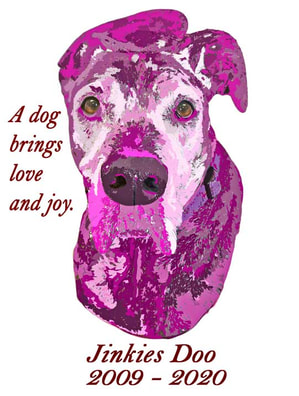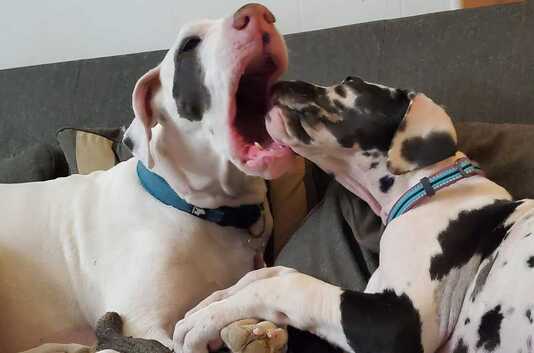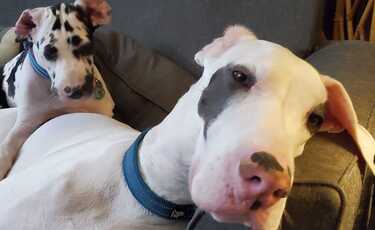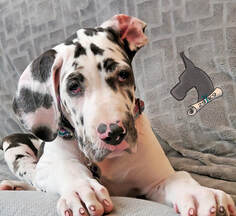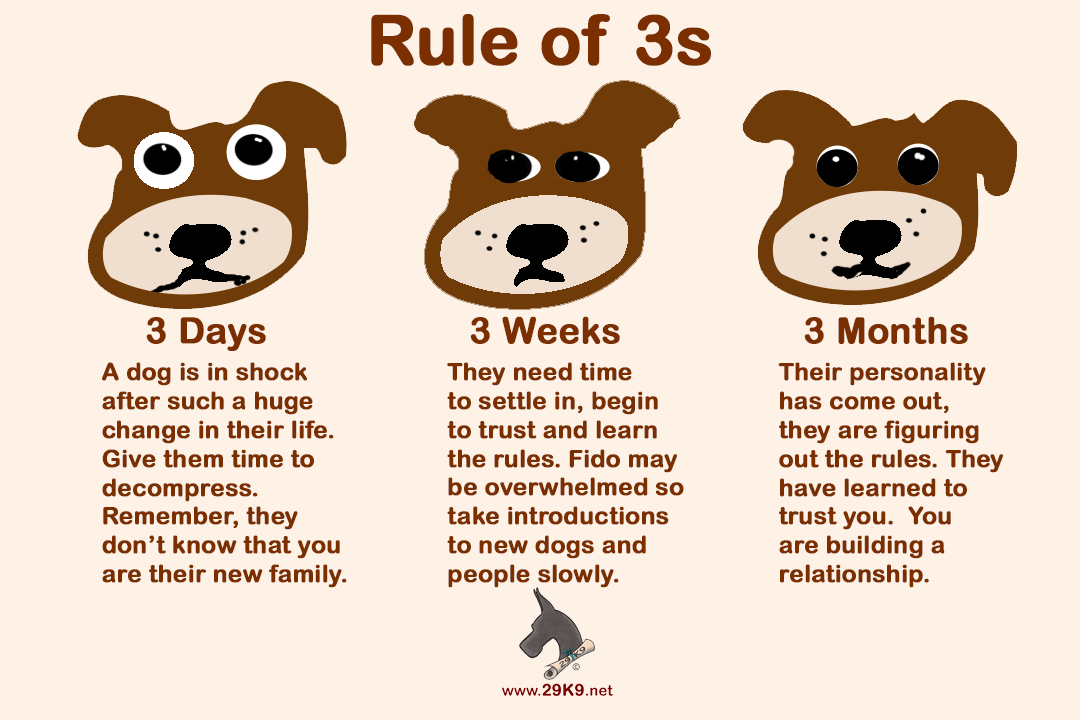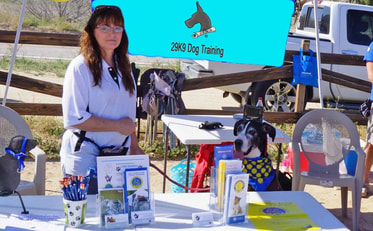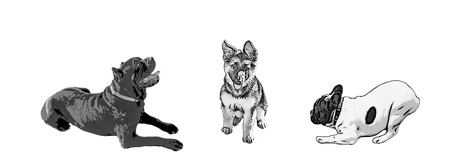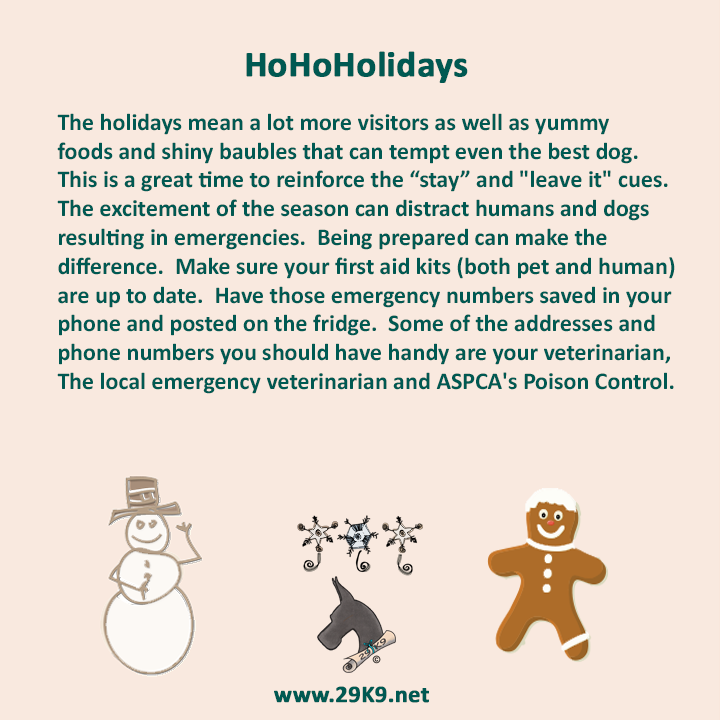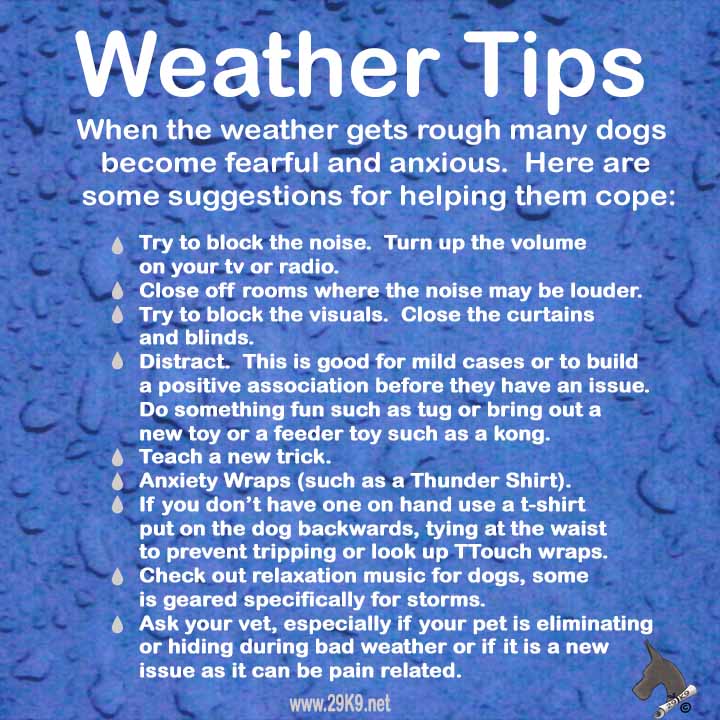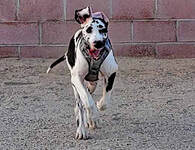 Does your dog have a reliable recall? Many don't and most dogs only respond when they want to. When a puppy or rescue comes home they often will follow us around and recall doesn't seem necessary until they begin to get a little more interested in the environment. They will appear to develop selective hearing, at least part of the time anyway. There are some easy steps to developing a reliable recall. It also is a matter of safety that your dog will respond. How do you build a solid and reliable recall in your dog? Easier and a lot more fun than you think. Here are some tips:
0 Comments
RuhRoh is 4 months old and hit a normal fear period the week before last. When she and I went to get in the car she spotted the garbage can on the curb and started backing up and giving a low 'woof'. The same garbage can that has been there every week that she paid no attention to previously. So we walked over to it, at her pace, rewarding every step of the way until she was no longer concerned. You can see at first her tail is swishing rather than wagging. She moves forward then backs up. I've attached the ring video but it's not the best quality. Saturday we tried to go to the home improvement store but she let us know she did not want to do that. Instead we hung out in the parking lot, watching people and carts go by. She got lots of treats when she engaged. Then we left. We didn't push it any further, just went home with lots of rewards. This way she was left with the positive rather than a scary impression if we'd tried to push her. 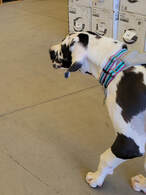 Thursday we made another trip to the home improvement store and she rocked it. I had no goal in mind, just following her lead. She was excited, showing none of the fearful behaviors from Saturday. She wasn't hiding behind us, she was wiggling with excitement (her back end wiggles so hard she smacks herself in the face with her tail), she gave little barks (well, for a Great Dane they are little barks) to get people to pay attention to her and as soon as they looked she'd wiggle even harder. This is why I tell puppy people not to make too big of a deal when something that was normal is suddenly causing fear. Don't make a big deal of it, reward the little interactions (if they look, if they get closer, if they don't hide) so that a positive impression is what your puppy is left with. If it's a normal fear period your dog will grow out of it fairly quickly. If it's more than that talk to a trainer who specializes in treating fearful dogs using reward based methods sooner rather than later. The American Veterinary Society of Animal Behavior has released their position statement that supports the use of reward based methods for all training. Click on the link below to read the entire statement. Evidence supports the use of reward based methods for all canine training. AVSAB promotes interactions with animals based on compassion, respect, and scientific evidence. Based on these factors, reward-based learning offers the most advantages and least harm to the learner’s welfare. Research supports the efficacy of reward-based training to address unwanted and challenging behaviors. There is no evidence that aversive training is necessary for dog training or behavior modification Humane Dog Training Position Statement Punishment can cause fallout behaviors. Increased aggression against other humans and/or dogs, anxiety, fear... it goes on and on. This is the reason I set out to educate myself, having seen the difference in our own dogs. Due to a combination of a back yard breeder and major health issues that resulted in isolation during her first year we had a Great Dane with just about every behavior challenge there is. Punishment was used to try and correct the behavior issues, from reactivity to resource guarding. We weren't beating her but we were using a prong collar, yelling... It did not work. The behaviors would stop temporarily and then come back worse. What appeared to be 'behaving' was actually her shutting down. It wasn't changing her emotional response which is what is needed for long term success. Through education I learned how to have a positive approach while using science as the guide. It does not matter the dog breed. We have worked with everything from the smallest Chihuahuas and Yorkies to the largest Pitbulls and Great Danes, high drive dogs like GSDs and Huskies as well as everything in between. What I learned with Jinkies gave me the passion to do what I do. To help other dogs without pain, without punishment. #reinforcementdrivesbehavior #sciencematters #dogtrainingrocks #compassion #respect #kindness #rewardbasedtrainingisbest #lovemyjob New puppies are awesome. Seeing a puppy causes the same physical reaction that occurs when seeing a baby. It gives us the warm fuzzies and causes the release of oxytocin, the hormone that causes bonding and brings out our protective instincts.
Puppies don’t know the rules, tho. Puppies, like humans, learn thru play. They learn what causes the play to continue (polite behaviors) and what causes the play to stop (impolite behaviors). Play may be with other dogs but it should also be with their human. One study found that proper daily play time reduced the likelihood of up to 22 different behavior challenges. When bringing in a new puppy to your family they need to learn the rules. An older dog may give them a free pass on play behaviors that may be unwanted or too over the top. They may correct the puppy with a grab of the snout or they may turn away or walk away. At some point, tho, you may need to intervene. Puppies are like toddlers in that when they are tired or hungry those over the top behaviors start to happen. Puppy piranha mode (where they want to mouth everything and anything they can) will often happen at this time. Offering them something to chew on aside from your other dog will be a big help. Watch for signs of stress in your older dog (licking, ears back, whale eyes, constant shifting away from the puppy). These stress signs signal that it is time to intervene and either engage your puppy in a play session with you, such as tug of war or throwing the ball, that allows your older dog time to relax and regroup. Provide both your puppy and your older dog with a self entertaining activity, such as time on a snuffle mat, stuffed kong or a new chew toy. This reward for an older dog will help reinforce that a puppy can be a good thing and will remember that reward instead of just the piranha puppy. Puppy Insanity. This is RuhRoh, our newest baby. Today she turns 13 weeks old. What have we been working on at home? She came from a great breeder who uses Puppy Culture to raise her puppies. Thanks to that RuhRoh arrived with an excellent sit already in her repertoire. We built on that sit to get some nice waits. Wait before eating, wait before coming out of her crate and after, before going outside, basically a wait anywhere that her puppy craziness might take over.
We’ve all seen the stories of the shelter dog who finally finds his person and they live happily ever after in perfect harmony. Unfortunately, this is not the norm. When a dog ends up in a shelter they have suddenly lost their family with no idea why. The reason doesn’t matter because the dog does not know that reason, just that his home and family are gone. The rescue or shelter may be amazing but it is not their home.
It can be very hard for a dog to adjust to shelter life. Staff and volunteers come and go, as do the dogs around them. They can hear other dogs barking, sometimes in fear, as well as smell the disinfectants. They don’t know what is going to happen from one moment to the next as they are moved from one kennel to another to a play yard with strange dogs. When a person or family makes the decision to adopt the dog they are then thrown in to another new place with new people and maybe even new dogs. This also applies to the "rehomed" dog. Be patient. You will want to show off our new family member but please remember that Fido’s world has been turned upside down and he needs time to decompress and adjust. Supervision is very important to make sure he doesn’t escape his new home and is safe with the new people and pets in his life. Dogs do not generalize behaviors to all locations unless taught. They may have been house trained but that doesn’t mean they are trained to your house. They may have had a doggy door which allowed them free access. Set up a way for the dog to tell you they have to go by using a bell hanging from the door. Take them out frequently, ringing the bell before you open the door. Soon Fido will be ringing the bell to let you know. For the first three weeks your new dog is building his trust in you and learning some of the family rules. Separate Fido from children and other pets when you are not there to actively supervise. What may be normal activity in your home may not be something he is familiar with and may cause fear. He needs time to process and learn the family rules. Now is not the time to take him to the dog park. You will start to see his personality come out. You may also see some challenges that need to be addressed with a positive reinforcement trainer. It takes about 3 months for most dogs to fully adjust. Fido may need a trainer to help him learn how to follow family rules, social skills, leash training and safely introducing to new dogs and environments. Adding lots of enrichment can help him learn to settle and keep him out of trouble. A great resource for bringing home an adult dog is Patricia McConnell, PhD book Love Has No Age Limit, Welcoming an Adult Dog Into Your Home. She discusses the Rule of 3s and how to apply it to making your new family member feel welcome and wanted.  Don’t judge a book by its cover. This idiom is never truer than when it applies to dogs. You see that sweet dog and decide that is the dog you want. You start imagining how he will fit into your life just so. Long walks in the neighborhood, playing with kids, maybe you’ll even become a therapy dog team and visit nursing homes. What do you get is not always what you thought you were getting. Your dog barks at every person and dog he sees while walking thru your neighborhood. He just sits there while you throw the ball for a game of fetch or runs off to bark at a butterfly. The couch potato you thought you would be snuggling with turns out to be a highly driven dog that needs activity or the dog you wanted to run and hike with prefers a short walk and then to lay in the sun in the yard. 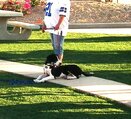 Sometimes we need to adjust our approach to the dog rather than trying to fix it. When we brought our Dixie home she was going to train as a service dog. She would be the perfect service dog, I thought. We started with puppy class and quickly realized something during the first session. Dixie preferred to be laying down than following along with the lessons. Instead of auto sits while on leash she did auto downs. Dixie also electrocuted herself 3 times in completely different ways before she was a year old. She destroyed every toy she came in contact with. She could not do a recall to save her life as she was busy being distracted by leaves, bugs, air. We started calling her “Pretty” as in “It’s a good thing you’re pretty”. She was not fully housetrained until almost a year old and also had excited urination. Meeting a new person, seeing a new toy, anything that was exciting, would cause a flood. Her self control area of the brain never kicked in. 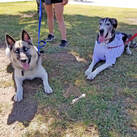 Even with all these training challenges our girl Dixie had two super powers. She did not react when other dogs were reactive, barking and lunging. They never fazed her as she was always in her own world. Her second super power was that she acted like it was the first time every time when we would teach the basics and was a super star at assisting in demonstrating how to teach new behaviors. Service dog was out but Dixie became the best assistant I could have for working with reactive dogs and teaching training classes. Dixie has helped hundreds of dogs learn to be better. How lucky was I to have this dog come into my life and be exactly what I needed? If I had not been able to take that step back and see what she could do instead of what I wanted her to do we would have missed out on helping all those dogs and our relationship would have likely been full of frustration and disappointment. First Introductions
First introductions should be outside, preferably in neutral turf. Take the dogs on a side by side walk. This helps tire an active puppy and while providing a happy back drop before entering the yard and home. Supervise It is important that all early interactions be supervised. Whether a new puppy or an older dog it can take a few weeks for everyone to get used to the new family member and new normal. Watching body language closely during this adjustment period can help prevent future problems. Separate the dogs if you are not able to closely supervise, especially during the first 3 weeks, until they have time to adjust to each other. Separate Baby Gates, crates and Xpens make great separators so that the dogs can have down time where they feel safe and comfortable. Separate eating areas since new puppies can be overly curious and older dogs may not appreciate a puppy interrupting them. Escape Route Make sure there is always an escape route so that the dogs don’t feel cornered. Have a clear path to get away can make the difference in whether a dog goes for the bite or not. No Punishment No matter what happens do not punish either dog. Punishment can make a bad association between the dogs resulting in escalation of aggressive type behaviors. Reward Reward when the dogs are getting along, whether playing with or simply being in the same room, be sure to reward with attention, special treats or even going outside. This will help cement that good things happen when the other dog is around. Intervene Watch for body language that indicates a problem may develop and intervene early with time apart to de-escalate. Older dogs may be tolerant up to a point so watching their eyes, ears, tail position and watch the puppy for signs that he is getting too ‘in the face’ of the older dog and needs time apart to calm down. Time Give the dogs time to become acquainted and adjusted. This creates a foundation rather than forcing them into a relationship that isn’t comfortable. Following the Rule of 3s, after about 3 weeks you should see things moving toward a comfortable co-existence and, depending upon the ages, playing together. Warnings Watch the body language. Lots of licking can be a sign of increasing anxiety which means the dog is not adjusting to the new dog. If the puppy yelps and the older dog does not back off but instead escalates it’s time for a break. You’ve hit the 3 week mark with no improvement. Any of these should net a consult with a fear-free professional. The weather outside is frightful so I thought I'd give a few tips for easing your dog's fears or anxiety during storms.
|
Ronda WarywodaCPDT-KA, UW-AAB Categories
All
Archives
July 2023
|

